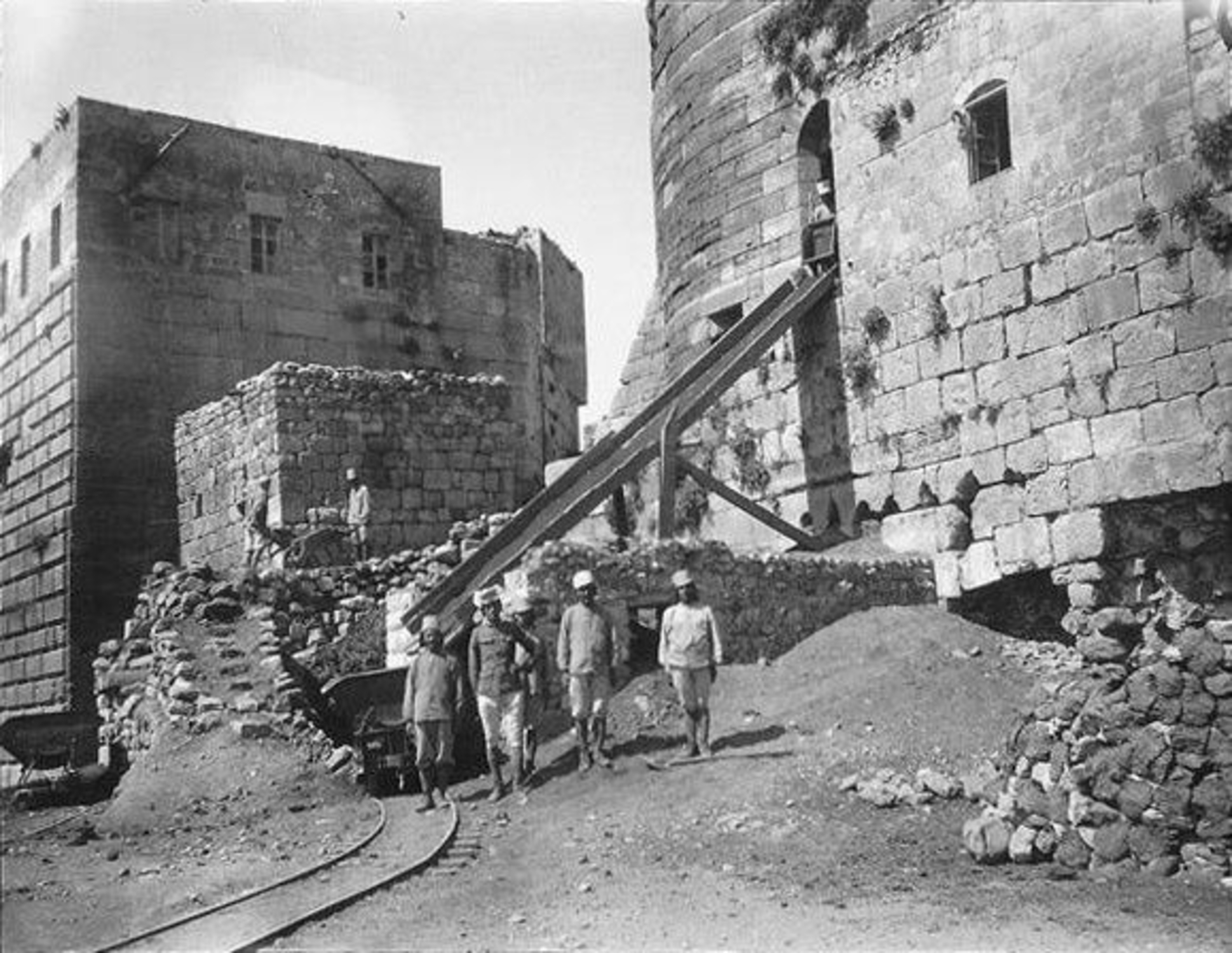
- Home
- Explore the site
- Pioneers
Baron Guillaume Rey (1837-1916)
The first archaeological studies of the Krak des Chevaliers were performed by Baron Guillaume Rey, geographer and member of the Société savante des antiquaires de France. In his Étude sur les monuments de l’architecture militaire des croisés en Syrie et dans l’île de Chypre (1871), he supports his analysis of the castle with illustrations from photographs, bird’s-eye-view reconstructions, and section and plan drawings, which show the castle as this leading scholar imagined it to have been at the time of the Hospitallers. His study, later used by Orientalists such as Max van Berchem in his Voyage en Syrie, and T. E. Lawrence (Lawrence of Arabia) in his thesis Crusaders Castles (1936), was a benchmark until Paul Deschamps published his own work.
The creation of an Antiquities department during the French Mandate for Syria and Lebanon (1920-1946) explains the sharp rise in the number of archaeological missions from 1920 onwards. It was at this point that Camille Enlart and Paul Deschamps produced their studies on Crusader architecture.
Camille Enlart (1862-1927)
At the invitation of the Haut-commissariat de la République française, the art historian Camille Enlart, a specialist in the Middle Ages, travelled to Syria from 1921 to 1922 to study the religious architecture of the Crusaders in the company of the architect Roger Jusserand. His study was published just before his death, in 1927, as Les Monuments des croisés dans le royaume de Jérusalem. Architecture religieuse et civile. In this work, he addresses the sculpture and modenature of the Krak des Chevaliers, particularly those of the chapel, the grand master's quarters and the great hall.




